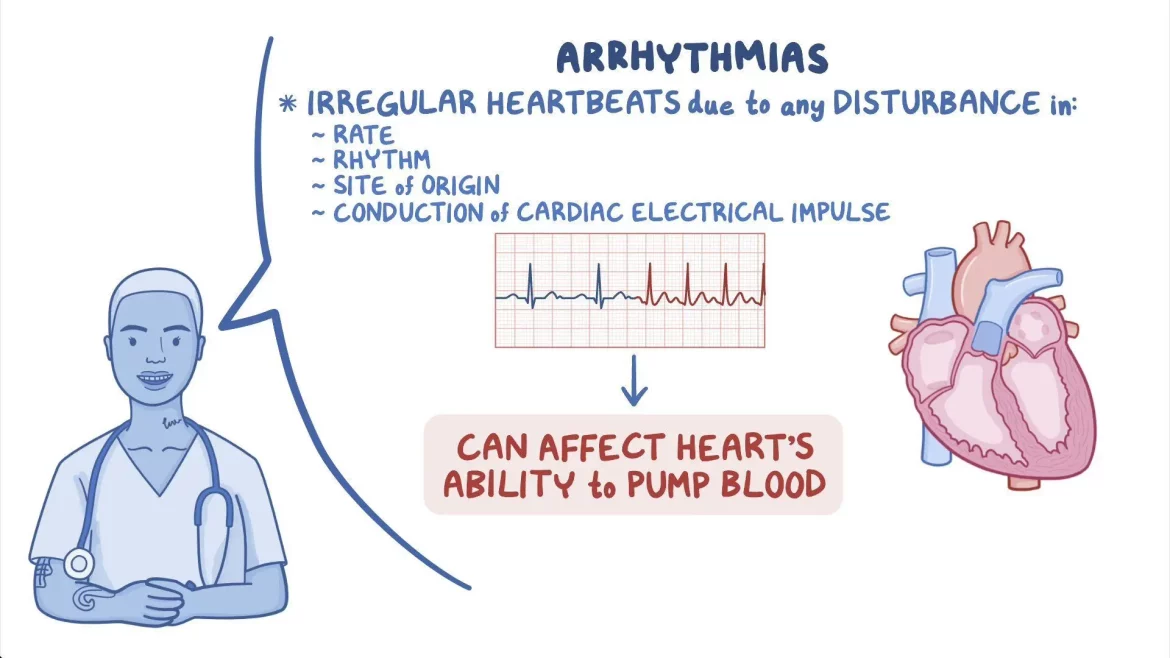Sinus rhythm and sinus arrhythmia are terms used to describe patterns of heartbeats, each with distinct characteristics and implications for cardiovascular health. Understanding the differences between normal sinus rhythm and sinus arrhythmia is crucial for both medical professionals and individuals seeking to comprehend their heart’s function and potential irregularities.
Normal Sinus Rhythm: The Basis of Cardiac Stability
Normal sinus rhythm (NSR) refers to the typical electrical activity of the heart’s sinoatrial (SA) node, which serves as the natural pacemaker. In NSR, the heart beats in a regular, coordinated fashion, maintaining an average rate between 60 to 100 beats per minute (bpm) in adults. This rhythm is characterized by:
Regular Heart Rate: The intervals between each heartbeat (RR intervals) are consistent, reflecting a steady pace of cardiac contractions.
P Wave Presence: Each heartbeat initiates with a P wave on an electrocardiogram (ECG), indicating the depolarization of the atria.
Normal PR Interval: The time interval from the beginning of the P wave to the onset of the QRS complex (atrioventricular conduction time) is within normal limits (0.12 to 0.20 seconds).
QRS Complex Shape: Represents ventricular depolarization and has a typical duration (0.06 to 0.10 seconds).
NSR is considered the optimal rhythm for efficient cardiac output, ensuring adequate blood flow to meet the body’s demands without undue strain on the heart muscle. Deviations from NSR may indicate underlying cardiac conditions or physiological responses to external factors.
SEE ALSO: Does Heart Murmur Cause Arrhythmia?
Sinus Arrhythmia: Understanding Variability in Heart Rate
Sinus arrhythmia (SA) differs from NSR primarily in the regularity of heart rate intervals. Unlike NSR, where the intervals between heartbeats are evenly spaced, sinus arrhythmia is characterized by slight irregularities in the timing of these intervals. Key features of sinus arrhythmia include:
Respiratory Influence: Sinus arrhythmia often manifests as variations in heart rate that synchronize with the respiratory cycle, becoming more pronounced during breathing.
Phasic Changes: During inspiration, heart rate tends to increase slightly, while it decreases during expiration.
Normal Variants: Mild sinus arrhythmia is frequently observed in healthy individuals, particularly younger individuals, and may not require intervention unless accompanied by other symptoms.
Sinus arrhythmia can be further categorized into respiratory sinus arrhythmia (RSA), where heart rate variations correlate closely with respiratory patterns, and non-respiratory sinus arrhythmia, which occurs independently of breathing cycles.
Clinical Significance And Diagnostic Considerations
Differentiating between NSR and sinus arrhythmia is critical during clinical assessments:
Diagnostic Tools: Electrocardiography (ECG) remains the gold standard for identifying and distinguishing between various cardiac rhythms, including NSR and sinus arrhythmia.
Monitoring: Continuous cardiac monitoring helps assess the persistence and impact of sinus arrhythmia on overall cardiovascular function.
Treatment Approach: Management of sinus arrhythmia typically involves monitoring for symptom progression or underlying cardiac conditions that may necessitate intervention.
Conclusion
In summary, while normal sinus rhythm (NSR) represents the standard pattern of heartbeats characterized by regular intervals and coordinated electrical impulses, sinus arrhythmia introduces variability in these intervals, often influenced by respiratory cycles. Understanding these distinctions is crucial for diagnosing and managing cardiac health effectively.
Whether encountered in routine check-ups or clinical settings, recognizing the nuances between NSR and sinus arrhythmia enables healthcare providers to deliver informed care and empower individuals to monitor their cardiovascular well-being proactively.
FAQs
Is sinus rhythm the same as sinus arrhythmia?
No, sinus rhythm and sinus arrhythmia are not the same. Sinus rhythm refers to the normal, regular heartbeat generated by the sinoatrial (SA) node. Sinus arrhythmia, on the other hand, involves variations in the regularity of the heartbeat intervals, often influenced by factors such as respiration.
What is the difference between rhythm and arrhythmia?
The main difference lies in the regularity of heartbeats. Rhythm refers to the pattern and regularity of heartbeats, such as sinus rhythm where heartbeats are regular. Arrhythmia refers to abnormal heart rhythms, where heartbeats may be irregular, too fast (tachycardia), too slow (bradycardia), or occur prematurely.
What is the difference between sinus rhythm and heart rate?
Sinus rhythm specifically refers to the normal electrical activity originating from the SA node, resulting in a regular pattern of heartbeats. It describes the rhythm itself. Heart rate, on the other hand, refers to the number of heartbeats per minute (bpm), regardless of the rhythm type. Sinus rhythm typically has a heart rate between 60 to 100 bpm in adults, considered normal.


